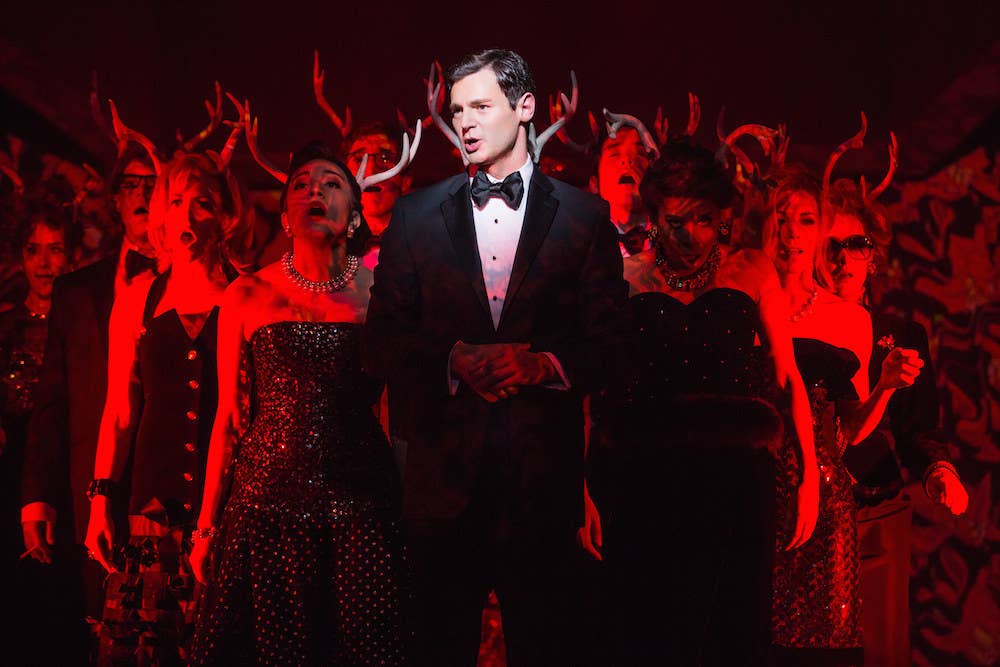
American Psycho — about an investment banker who brutally murders people in his spare time — has long been the subject of controversy, not only because of its stomach-turning violence but also due to the misogyny, racism, and homophobia that its antihero, Patrick Bateman, espouses.
While plenty of critics have come around to Bret Easton Ellis’s 1991 novel and Mary Harron’s 2000 film adaptation, translating one of the most controversial books of all time for the stage is a whole new complicated notion. But that’s exactly what Roberto Aguirre-Sacasa — whose eclectic writing work includes TV series Glee and Supergirl, recent horror remakes Carrie and The Town That Dreaded Sundown, and the book for the musical Spider-Man: Turn Off the Dark — was tasked with doing for the American Psycho musical.
The show, which opened April 21 at the Gerald Schoenfeld Theatre, is a glorious, bloody spectacle with an ‘80s techno score by Duncan Sheik, and as its book writer, Aguirre-Sacasa has adapted the novel with a keen sense of humor and a streamlined story. He recently spoke with BuzzFeed News about how he and the rest of the American Psycho team turned a dark, gruesome satire into a big Broadway musical that actually works.
1. Own your killer's appeal.
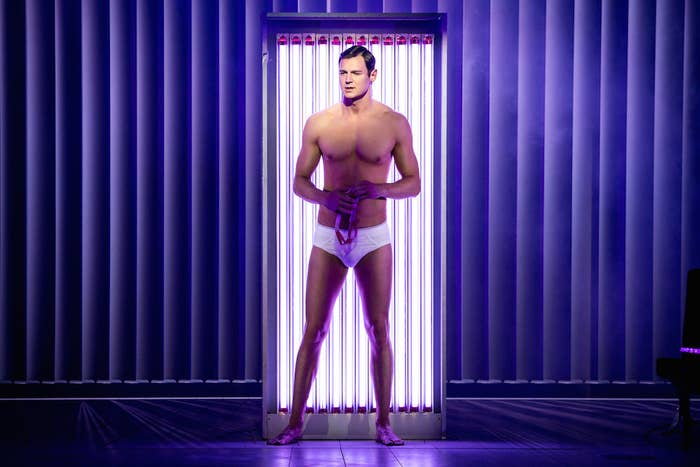
Patrick Bateman is terrible to women, dismissive of minorities, and ruthless at work — and that’s ignoring the fact that he also tortures and dismembers people. He’s a monster, and yet, in the grand tradition of fictional murderers, he’s also a beloved figure.
“He hasn’t become as popular as Jason from Friday the 13th or Freddy from Nightmare on Elm Street, but he is sort of an antihero cult figure,” Aguirre-Sacasa said in a phone interview with BuzzFeed News. That adoration has extended to the musical, which opens with a title card, a somewhat unusual touch that gives the show a more cinematic feel. “Even when the title card fades into view, there’s cheers and whoops,” Aguirre-Sacasa said. “And when Patrick Bateman is first revealed in the iconic tanning bed that was so popular in the movie, again there are cheers and whoops.”
Some of the biggest applause comes when Patrick, played by Benjamin Walker in the musical, dons a plastic raincoat and emerges with an ax to dispatch Paul Owen (Drew Moerlein). Not even Sweeney Todd earns that kind of reaction for his righteous kills. Aguirre-Sacasa compared audience response to the kind Spider-Man got in Turn Off the Dark: “The crowd kind of went crazy. They were just waiting for this character to come alive and be alive in front of them.”
Aguirre-Sacasa still had to make sure that Patrick stayed true to his abhorrent nature while making him a charismatic-enough leading man. He resisted the urge to excuse Patrick’s behavior: As in the novel, there is no real explanation as to why Patrick is the way he is, because Aguirre-Sacasa and the creative team for the musical realized it would be a mistake to try to solve that mystery.
Instead, they relied on the humor inherent in the piece and the charm of their leading man. “I don’t know if I consciously wrote to try to make him likable,” Aguirre-Sacasa said. “It was a concern that was mitigated by Christian Bale [in the movie], but I think Ben really mitigates it because he is so in command and he is so charismatic and he is so sexy and he has such a fucking wicked sense of humor that you really find yourself — I don’t know if you find yourself rooting for him, but you do find yourself getting aboard the ride, as gruesome as it is.”
2. Make sure the satire is razor-sharp.
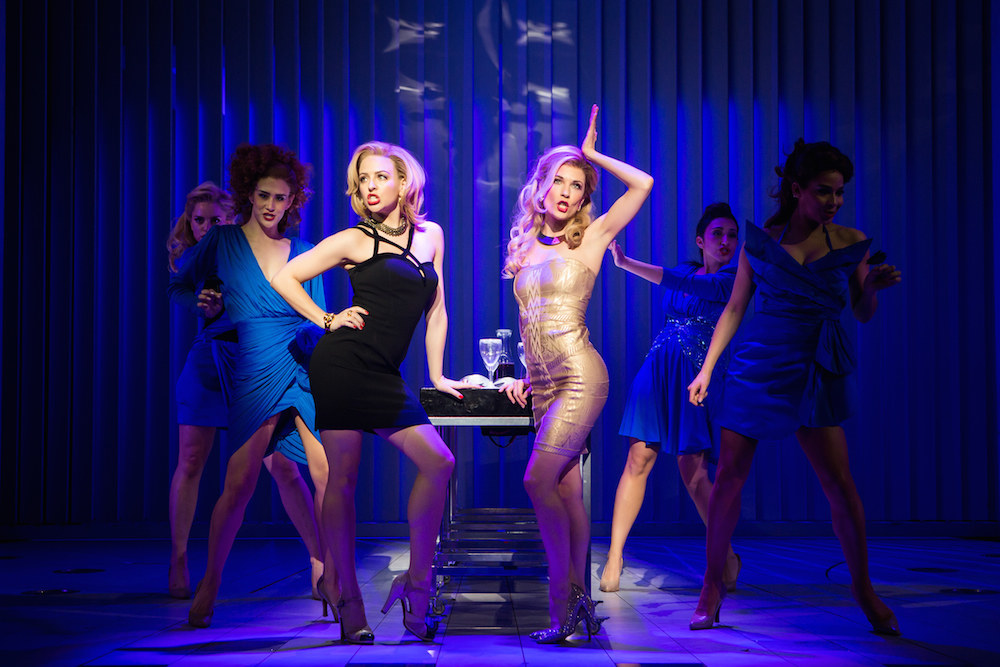
The first time Aguirre-Sacasa read Ellis’s novel American Psycho, many years before he signed on to adapt it for the stage, he was put off by the same things that have turned others against it: the violence, the hateful language, the nihilism. When he reread the book for a college course, however, he latched on to the “pitch-black humor.” Once he understood it as satire, he came to appreciate the story as a hilarious and pointed critique of contemporary society.
“Rather than glorifying Patrick’s actions, it was condemning them as the most extreme version of bad impulses,” Aguirre-Sacasa said. “It was comparing all of what was bad in society — consumerism, racism, all that stuff — kind of taking it to the nth degree to show how dangerously close we are to Patrick Bateman, and what happens when those impulses go unchecked.”
He did his best to capture that tone in the script, which doesn’t shy away from objectionable language that he noted is still shocking 25 years later. It was important that he not sanitize anything, although he admitted that he bristles whenever Patrick says “fag” or “faggot,” which happens, by his recollection, 15 times in the show.
As with the novel and film, there will be audience members who don’t get American Psycho’s irony: The violence and casual slurs will seem jarring for all the wrong reasons. To some degree, that’s unavoidable. Aguirre-Sacasa made sure his book, like the novel it’s based on, used these confronting elements to make a point about the realities of the world Patrick lives in. How the audience responds, of course, is uncontrollable.
“Sometimes people laugh and sometimes they don’t laugh, but it does unsettle me,” he said. “It feels like that’s part of American Psycho — the language and the misogyny and the homophobia and the racism. That’s just how it is. But yeah, it’s bracing.”
3. Dissect the source material.
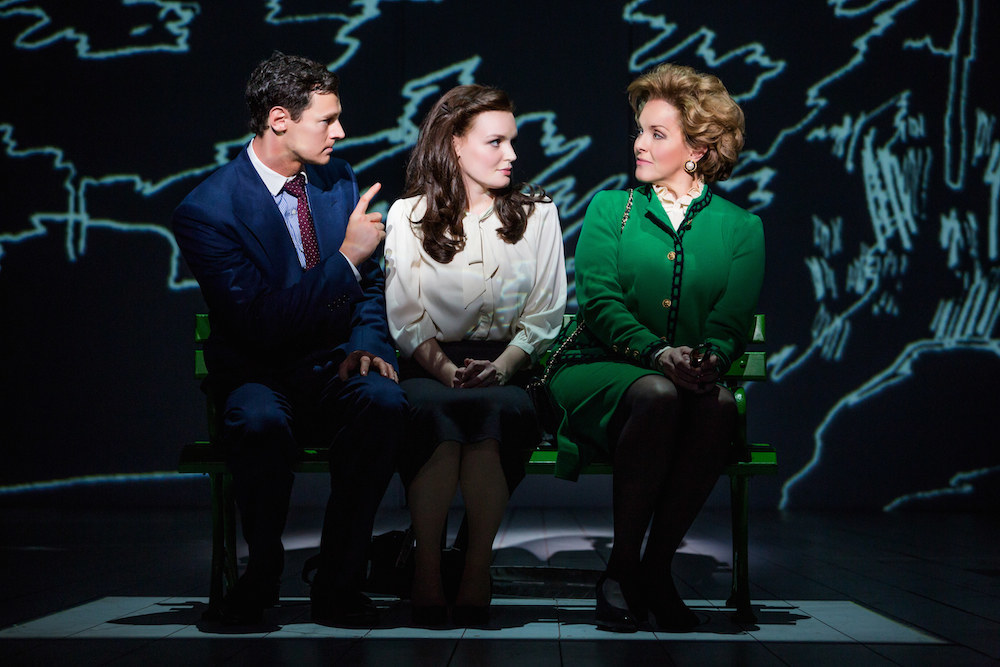
When Aguirre-Sacasa was rereading American Psycho, he made note of moments that he thought would work well onstage — and he was particularly interested in scenes and characters that hadn’t made it into the film.
“There was a paragraph about Patrick’s mother, and I thought, Oh, that could be interesting,” he said. In the musical, Mrs. Bateman, played by Alice Ripley, gets her own song. “That’s something we didn’t see in the movie, but it might be something that could dimensionalize Patrick a little bit more.”
At the same time, there were aspects of American Psycho that had become iconic thanks to the film adaptation, and Aguirre-Sacasa knew audiences would be expecting them. He didn’t want to eschew those elements completely, so there are scenes in the musical that hew closely to how they looked onscreen. The murder of Paul Owen, for example, should look very familiar to anyone who has seen the movie. Patrick’s morning routine is also very close to the film version and the book version. “Of course I went back to the book and looked up the morning routine and cannibalized it,” Aguirre-Sacasa said.
Also taken directly from the novel: the specific references to Patrick’s high-class ‘80s lifestyle. Of course, much of what was worth bragging about then now gets laughs, like his not-quite-widescreen Toshiba and his Walkman.
Aguirre-Sacasa also made sure to keep in as many references as possible to Patrick’s role model, Donald Trump. “Donald Trump is Patrick Bateman’s hero, and throughout the novel, he talks about Donald Trump. He admires Donald Trump, he wants to be invited to Donald Trump’s Christmas party,” he said. “That plays funny now because Donald Trump is more in the news and more terrifying than he’s ever been.”
4. Know where to make cuts.

There have been countless changes made to Aguirre-Sacasa’s book and the show as a whole since American Psycho had its 2013 run at London’s Almeida Theatre, with former Doctor Who Matt Smith as Patrick Bateman. Throughout previews on Broadway, Aguirre-Sacasa and the rest of the team were working to fine-tune the show for a new audience. There were no major changes, but, as Aguirre-Sacasa put it, “we shaved a little bit off of everything.”
In an earlier draft, there were a couple references to the infamous rat scene in the book. (If you’re not familiar with it, do not look it up.) Because it essentially amounted to an inside joke and mostly confused audiences, the lines — along with the live rat cameo — were nixed.
But in many cases, knowing what to cut came from looking at the scenes and the performances that were working. “There is a universe where American Psycho doesn’t have the scene and the song with his mother,” he said, “but you’re not gonna cut Alice Ripley’s one song, so you tighten around it. That’s a lot of the work we did.”
Similarly, the biggest change Aguirre-Sacasa made during previews was amping up the role of Tim Price, Patrick’s best friend, in part because he wanted to see more of Theo Stockman, who plays Tim and whom Aguirre-Sacasa called “one of our best, funniest actors.” “Tim Price used to go missing the first night of Tunnel, and you weren’t sure if Patrick had killed him or not,” he said. “After the first week or second week of previews, we changed it so that Tim Price didn’t leave the show and in fact was threaded through, the way that Patrick’s other friends were.”
5. Go for the heart.
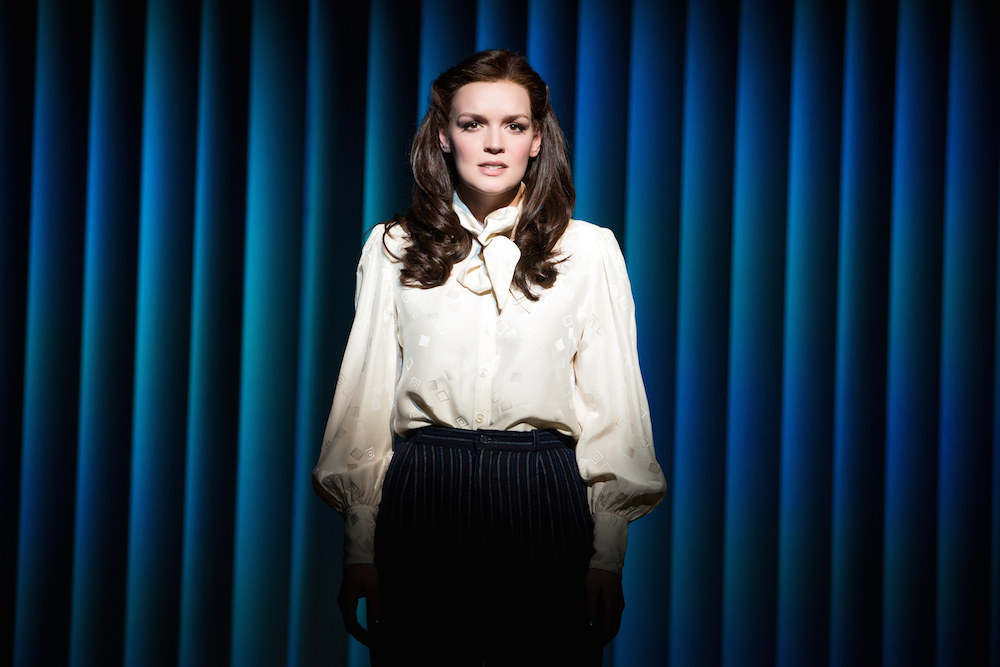
“All musicals are love stories,” Aguirre-Sacasa posited. American Psycho was never going to be a gushy romance, but the book writer did work to heighten the emotions and deepen some of the relationships from the book in order to make the story more theatrical. The character of Patrick’s secretary Jean, played by Jennifer Damiano in the show, has a more prominent role in the musical than in the book or the film.
“We kind of made Jean’s relationship with Patrick more of a throughline, and it really did become a ‘beauty and the beast’ kind of story,” Aguirre-Sacasa said. “Her importance in the musical, because we zeroed in on her, is much larger than it was.”
It was important to the creative team to flesh out all of the side characters, in part to broaden the show beyond Patrick’s perspective. Giving Patrick’s girlfriend Evelyn (Heléne Yorke), his mistress Courtney (Morgan Weed), and his co-worker Luis (Jordan Dean) richer interior lives also played into Aguirre-Sacasa’s “love story” conception.
“Honestly, Evelyn, Courtney, and Luis — because we focused on all of those relationships or unrequited love stories — they’ve become more important than they are in the novel or in the movie,” he said. “That was kind of an early decision and an early organizing principle on how to structure the musical.”
6. Don't be afraid to get bloody.
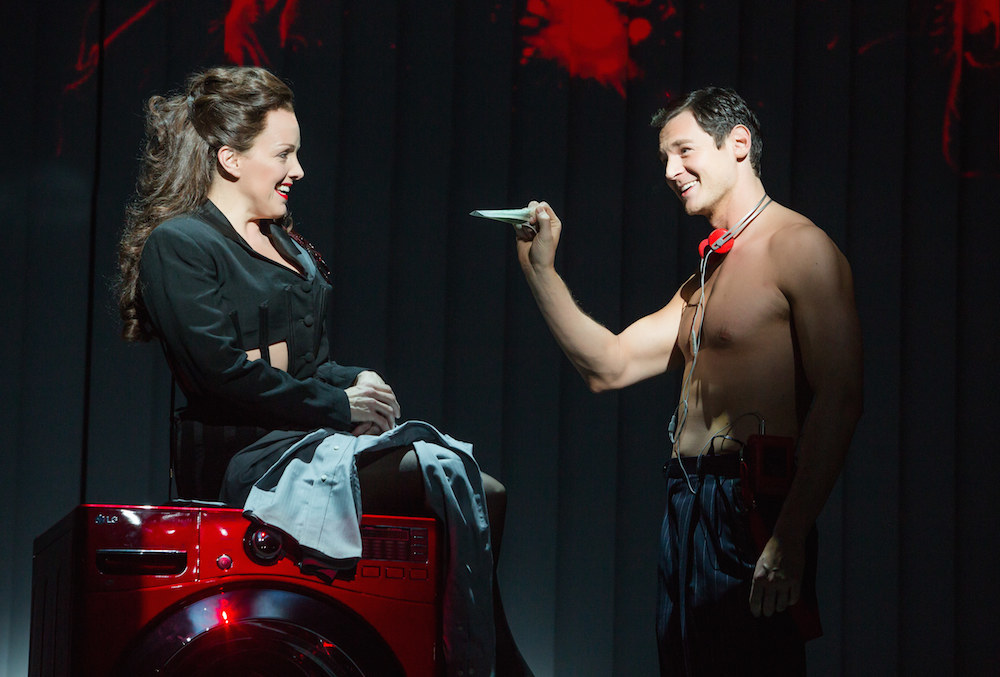
Aguirre-Sacasa originally imagined the violence in American Psycho as very theatrical — think red ribbons in lieu of stage blood. The London production was entirely bloodless, with murders implied by things like lighting effects. The writers and producers were concerned that too much blood would turn off audiences, particularly in an in-your-face medium like theater — but going to the opposite extreme turned out to be a mistake.
“Critics said, ‘Where’s the blood in American Psycho?’” Aguirre-Sacasa recalled. “We’d been really gun-shy of going there.”
So, when it came time to regroup for the show’s Broadway debut, he said, “at the top of everyone’s list was ‘We must have blood’ and ‘There must be a lot of blood.’” There’s not much in the first act until Patrick kills Paul Owen with an ax, a murder that serves as the act break. With plastic shielding the audience as well as Patrick, blood sprays in all directions. During intermission, stagehands mop the floor and wipe down the walls. And the second act is, in some ways, even more gruesome.
When Aguirre-Sacasa first saw the reconceived — and much messier — version of American Psycho, he was surprised by the violence, but he also realized that the new iteration was the way things always should have been. Avoiding blood entirely was a “fundamental disservice to this text,” he said.
Aguirre-Sacasa called the nightmarish second act “a bloodbath, literally,” which he credits to director Rupert Goold. “Rupert’s decision to include that much blood, and to stage Act 2 that way, as kind of a blood phantasmagoria, was exactly right. Because that’s what the show is, and being timid about that will leave no one satisfied.”
7. Understand that you're going to upset people.

To say that American Psycho is not family-friendly is something of an understatement: This is easily one of the goriest shows to hit Broadway in years. Add to that some deeply un-PC language and heavy sexual content and you have a show that’s not going to appeal to everyone.
Early on in the process of developing American Psycho, Aguirre-Sacasa and Duncan Sheik had to come to terms with that. “We realized, ‘OK, this will never be Legally Blonde the musical or Hairspray the musical, so put that completely out of your mind,’” Aguirre-Sacasa said.
It was more important to him and the rest of the team to create a show that honored Ellis’s original vision and the title American Psycho. While a watered-down version might have broadened the show’s appeal, it would have undermined the passion the writers had for the project — not to mention alienating fans of the book and film.
“I didn’t even think, Oh, this needs to be palatable for a mass audience,” Aguirre-Sacasa said. “I’ve never gone into a project thinking that, and I certainly didn’t for American Psycho.”
As expected, the response to American Psycho has been mixed. The show’s reviews run the gamut: The New York Times’ Ben Brantley wrote, “This psycho is neither scary nor sexy,” while Mark Kennedy at the Associated Press called the show a “darkly wonderful adaptation.” It earned only two Tony Award nominations, for Scenic Design and Lighting Design, but it’s not exactly a surprise that American Psycho has failed to resonate with everyone. And regardless of how long it runs or how many accolades it earns, it has already left an impression on Broadway.
“There is so much great work on Broadway, you really do need to be a loud show to cut through that,” Aguirre-Sacasa said. “And that’s one thing that American Psycho has. It is absolutely loud and bloody and not quite like anything else.”
